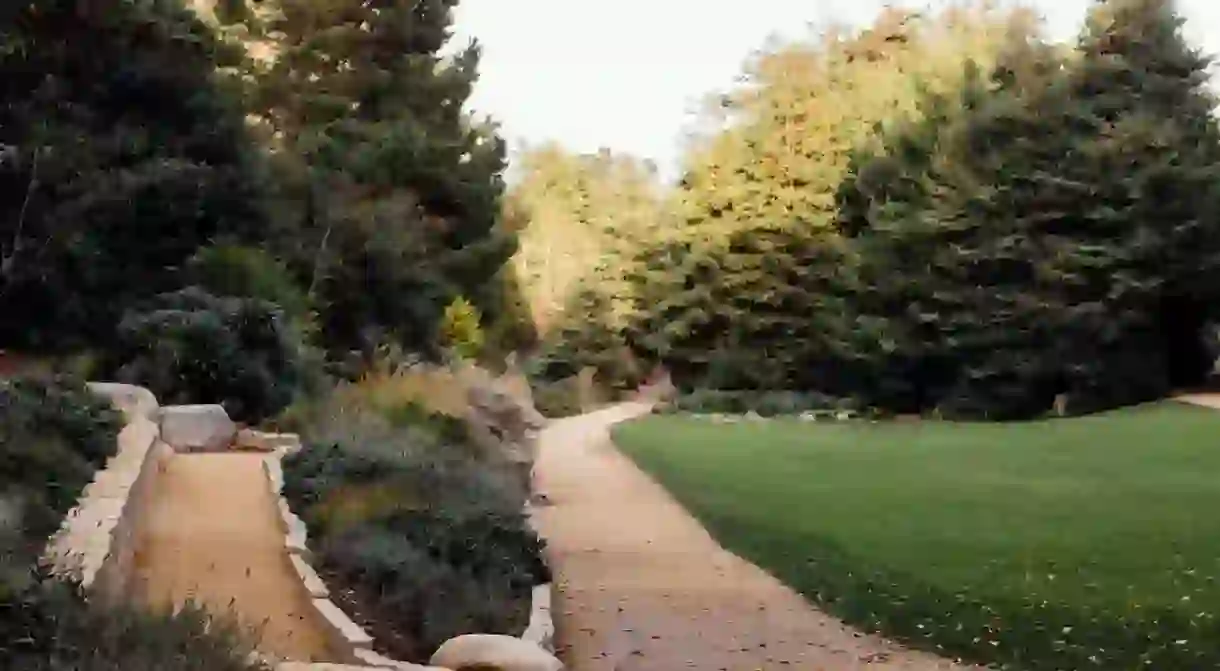A Closer Look at San Francisco's Powerful AIDS Memorial

San Francisco’s National AIDS Memorial Grove strives to educate future generations about the disease that defined a generation and honor those affected.
On April 24 1980, Ken Horne, a San Francisco resident, was reported to the Center for Disease Control with Kaposi’s sarcoma. It was an early indicator of the disease which would come to be known as acquired immune deficiency syndrome, or AIDS, and Horne was the first US resident officially diagnosed with a disease that would soon span the city of San Francisco, and indeed the wider world. As tens became thousands, San Franciscans banded together in support of the ongoing diagnoses, and soon enough, the fight against AIDS began to have a palpable effect on the city as a whole.
Throughout the 1960s and 70s, San Francisco was known to be one of the most accepting American cities for LGBTQ people. As many LGBTQ Americans moved to the city in search of acceptance, activists like Harvey Milk began to show that the LGBTQ community was a political force to be reckoned with. Milk and his constituents organized protests and he was eventually elected as San Francisco’s City Supervisor in 1978. Milk was the first openly out man to hold political office in California, and the LGBTQ community of San Francisco continued to flourish well into the 80s and 90s.

In the year Milk held office, San Francisco’s LGBTQ population skyrocketed, with an estimated one third of all active voters identifying as homosexual. Two years later, a new and unknown cancer dubbed GRID (gay-related immune deficiency) spread through the community. In its early onset, there was no understanding of how it passed between people or how to treat it, but it was clearly spreading quickly and gay men were disproportionately affected. It wasn’t until individuals outside of the gay community received diagnoses that doctors began attributing the disease’s passing from person to person as unrelated to sexual orientation, but rather a transfer of contaminated blood or body fluid. The name was changed to AIDS, and the San Francisco community remained highly affected.
In the early years of the epidemic, fear surrounding the disease ran rampant. Because its means of transmission and detection was still mostly unknown, many – even some doctors – feared being in physical contact with those who were HIV positive, often leaving dying patients without access to care or the affection of their loved ones.

As a result, the resilient city came together to fight for greater research and education, and to offer those who were infected with HIV/AIDS the services they needed. In 1982, the San Francisco AIDS Foundation (SFAF) was formed with the mission to halt the AIDS outbreak in the US.
Nearly a decade later, a small group of locals devastated by the crisis came together, along with hundreds of volunteers, and transformed 10 acres of the de Laveaga Dell in Golden Gate Park into a place of solace, hope, and remembrance. In 1996, through legislation signed into law by then-President Bill Clinton, the local memorial was designated as the National AIDS Memorial Grove. Today, the AIDS Memorial is one of San Francisco’s most significant monuments, and one cared for by the community as a whole.

Since its founding, the National AIDS Memorial Grove has strived to educate future generations about the disease, and to honor those affected by including them in the Circle of Friends—a stone crescent engraved with the names of 2,500 people touched by AIDS. Thousands of volunteers help maintain the site through community volunteer workdays and, on December 1 each year, the group hosts the World AIDS Day National Observance. Additionally, the non-profit offers the Pedro Zamora Young Leaders Scholarship to college students who are dedicated to helping end the epidemic.

Today, the CDC estimates that nearly 1.1 million Americans are living with HIV, and about 15 percent of those are undiagnosed. With the hard work of SFAF, the National AIDS Memorial Grove, and other organizations nationwide, the number of those newly infected by HIV decreased by 8 percent between 2010-15, with hope that the number will continue to drop each year. New treatments mean individuals in treatment for HIV are often able to bring their chances of passing on the virus to zero, and the future looks bright for a cure.
AIDS, the once-fatal disease, is now manageable through the efforts of activists and scientists. Many HIV-diagnosed patients go on to live with treatment, support, and understanding. And many remember the National AIDS Memorial Grove as a source that helped eradicate fear and replace it with understanding, help, and hope.

















